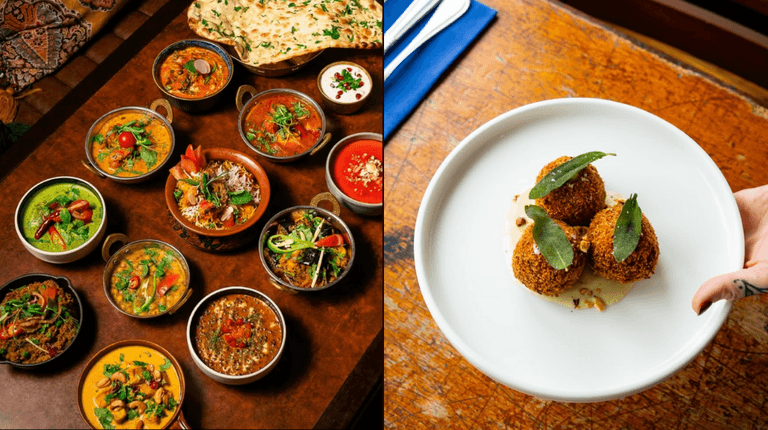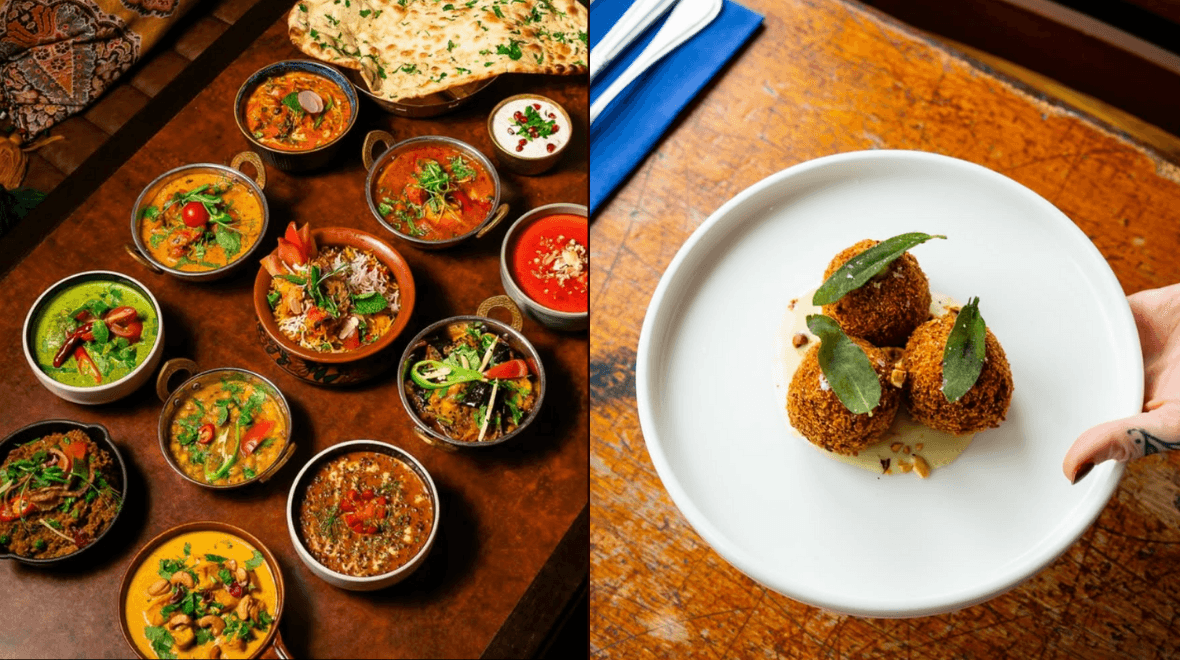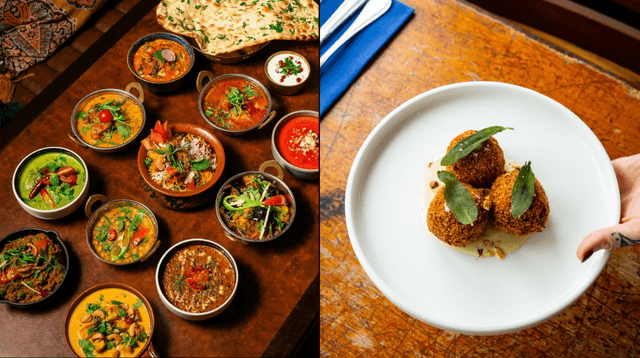
Our new series showcases Dublin's most beloved postcodes, by chatting to the folks that make up communities, getting to grips with the culture, and sampling the very best grub and the sups.
Inchicore has its roots in industry and occupation, with the village growing around Richmond Barracks, a base for the British Army, and a pivotal location in the story of Ireland's independence. Alongside the Inchicore rail works, which employed nearly two thousand at its peak and is still active, nearly 180 years after its establishment. What exists today is an established community rich in history, working-class identity and pride, with everything from authentic taquerias beside local pubs, the coolest industrial estate in Dublin, life-size replicas of the Lourdes grotto and some of the friendliest people in Dublin. Walking around Inchicore, it’s obvious that the people who make up the community here love it. We talked to dozens of locals and they all had the same answer to the question of what makes Inchicore special - the people.
Originally a small village in the outskirts of the city, like a lot of places the city bounds expanded to meet it, changing the fabric of the place from a rural village into a bustling town. Set around a marsh on the River Camac, which still runs pretty unseen through the place, popping up at the back of residential houses and under the odd bridge. While not definitive, some sources suggest that the name Inchicore translates in Irish as Inse Chaoire or sheep island, referring to a watering site for sheep before their journey into the city centre markets. During the eighteenth century, paper and textiles industries developed along the river, while much of the water mills, water wheels and weirs have vanished over time, the magnificent Kilmainham Mill still exists and much of the machinery is still in place. The village developed into a significant industrial and residential suburb, around Richmond Barracks built in 1810 and the Inchicore Railway Works (known as the Inchicore Works or the Works) which was built in 1846. The Great Southern and Western Railway chose the then rural site of Inchicore for its workshops, roughly 5 kilometres west of the city centre it had plenty of room for both the large machinery and the large machinery workers. Houses and amenities developed around The Works complex to accommodate the workers. The Works is still one of the largest employers in the area, with major engineering works for Iarnród Éireann taking place in the large tram yard terminus.
While nearby Kilmainham Jail is synonymous with the struggle for Irish independence, Inchicore's Richmond Barracks was also a centrepiece during the 1916 Easter Rising, housing over 3,000 suspected rebels before their sentencing, including the leaders and members of Cumann na mBan. Beside the Barracks, Goldenbridge Cemetary was the first dedicated Catholic cemetery in Ireland that opened after Catholic Emancipation and is the final resting place of modern Ireland's first head of government, President of the Executive Council W. T. Cosgrave.
The majority of Inchcore sits in Dublin 8, West of Kilmainham, North of Drimnagh and East of Ballyfermot, with parts of it stretching to extend into Dublin 10 and Dublin 12. Like a lot of Ireland, Inchicore was once entrenched in the Catholic faith, it's easy to see these markers of faith, from the churches dotted around to sheer scale of the Oblates Church of Mary Immaculate which dominates the road into town. A walk around the place (which is free to enter) will show you beautifully kept gardens and a full-size replica of the Grotto of Lourdes, which was opened in 1930. Incidentally, if you want to know who is a local or not, the pronunciation of the Oblates is a giveaway (hint it's the "ob-il-itz").
Not just the land of saints, Inchicore is also the land of scholars, with several poets calling it home over the years, including Thomas Kinsella who was born at the Ranch (a housing estate just before you enter lower Ballyfermot under the railway bridge from Inchicore), the maligned Jim Phelan and Michael Hartnett who lived on the Tyrconnell Road for a spell and penned the Inchicore Haiku. 'Poet of the Blackbirds' Francis Ledwidge had associations with St. Michael's CBS, formerly Richmond Barracks, where he enlisted and trained before shipping out to the trenches in Flanders during WW1.
When it comes to sport it's difficult to overlook the importance of St. Patrick's Athletic (known as St Pat's) on Inchicore and the wider community. Founded in 1929 it has hosted some of Ireland's top players like Paul McGrath, Brian Kerr, Paddy 'Ginger' O'Rourke, Paddy Dillon and loads more. Much like it's fans, the pitch is fully embedded into it's locale, not far from the main street of Inchicore, set into back of residential houses and apartments. The atmosphere on match day is nothing short of electric, you'll be hard pressed to find neck that's not slung with a scarf, a hand that's not waving a flag or a back that's not covered with a jersey, with young and old heading into Richmond Park.
The Liffey Gaels play GAA out of East Timor Park on Sarsfield Road, while Oblate Hall is the training ground for basketball, there's bouldering in Gravity Climbing Centre in Goldenbridge Industrial Estate and the Dublin Roller Derby league train and teach skating in Inchicore Community Sports Centre. There are plenty of socially led initiatives including the incredible Frontline Bikes, which sells secondhand bikes and operates as a training shop for people who have struggled with addiction and have some incredible initiatives like donating bikes to kids in Direct Provision. There's FoodCloud which operates out of Richmond Barracks every Friday, the team take surplus food and transforms it into a delicious cafe offering, with lunch options, cakes and coffees. There are a couple of small parks nearby the Grattan Crescent Park a newly rebuilt playground in the centre of Inchicore, all-weather pitches in Markievicz Park in nearby Ballyfermot, a stroll along the Camac in Drimnagh's Lansdowne Valley Park, and there's also the canal where you can walk/cycle all the way into D4-land. If you fancy stretching your legs, there are plenty of spots nearby to run, walk or chill, such as Kilmainham's IMMA, Islandbridges's The War Memorial Park and The Pheonix Park where you could lose yourself for hours.
This mainly residential area has seen a fair few openings over the last few years, for independent coffee shops there's Boom Coffee off Tyrconnell Road, Unfiltered Coffee on Emmet Road and Greenville Deli across the way which is a great place to sit out with a sandwich when the weather is playing ball. For lunch, there's Tacos Lupillo who operate beside Cleary's pub (where you can enjoy the cheapest pint of Guinness in Dublin and some of the best Mexican in the city), hefty sambos from Mambo Sambo, Riggers which turns into a burger spot in the evening, and Small Changes the zero waste store which has dipped it's toe into the cafe game the last while. You are spoilt for choice for pizzas, with Tonis Takeaway serving some incredible pis from their wood-fired oven (don't skip the homemade slaw) and the Inchicore institution Rascals Brewing Company who serve some of the best pizzas in Dublin alongside their award-winning sips. There are not a lot of restaurants around, but Kari has been a great addition to the area, an incredibly original Indian restaurant from the husband-and-wife team behind Konkan on Clanbrassil Street. For carveries, there's the Black Lion an absolute gem of a pub with plenty of room and a beautifully preserved wooden bar area.
There are plenty of great boozers in the Inchicore area, with a great mix of styles and histories. During games, there's the St Pat's local McDowell's which is a paired back-friendly spot which invariably has an electric scooter or two out the front. The Saint is also big on match days, the newer establishment is where you can grab a game of pool, a craft beer and some Tacos Lupillo grub. The beautifully preserved The Black Lion in the centre of Inchicore was rumoured to only serve men until relatively recently, now it's very much family-friendly and welcoming. Cleary's is an incredible pub, with Tacos Lupillo beside it it makes for a very modern Dublin confluence, the mix of highly patriotic interior, warm staff and incredible grub, you can also get the cheapest pint of Guinness in Dublin there (coming in at €4.70). Set off the beaten track in the back of a housing estate, Slatt's is more liken to a country pub, nice and quiet with friendly respectful staff. While being set on the Inchicore-Kilmainham border, for us The Glen of Aherlow (known as The Glen) is the best pub in Inchicore. Whimsically named after a valley in Tipperary, it's set amongst residential houses, and when you step foot into the lounge you are stepping back into time. It's changed hands for only the fourth time in 75 years and the changes to the place are minimal, just some nicely integrated outdoor furniture, the removal of the badly taxidermied fox and the integration of card payments, and thank god for that.
Spending time and talking to residents, the warmth and enthusiasm that flowed naturally from people was special. This is a community that looks after itself and still offers so much. Like so many areas in Dublin, Inchicore has undergone change in recent years, but at its core, it remains the same, a welcoming, eclectic and diverse neighbourhood that has its own culture, it’s own history, poetry and stories, moving into the future without forgetting it’s past.



















